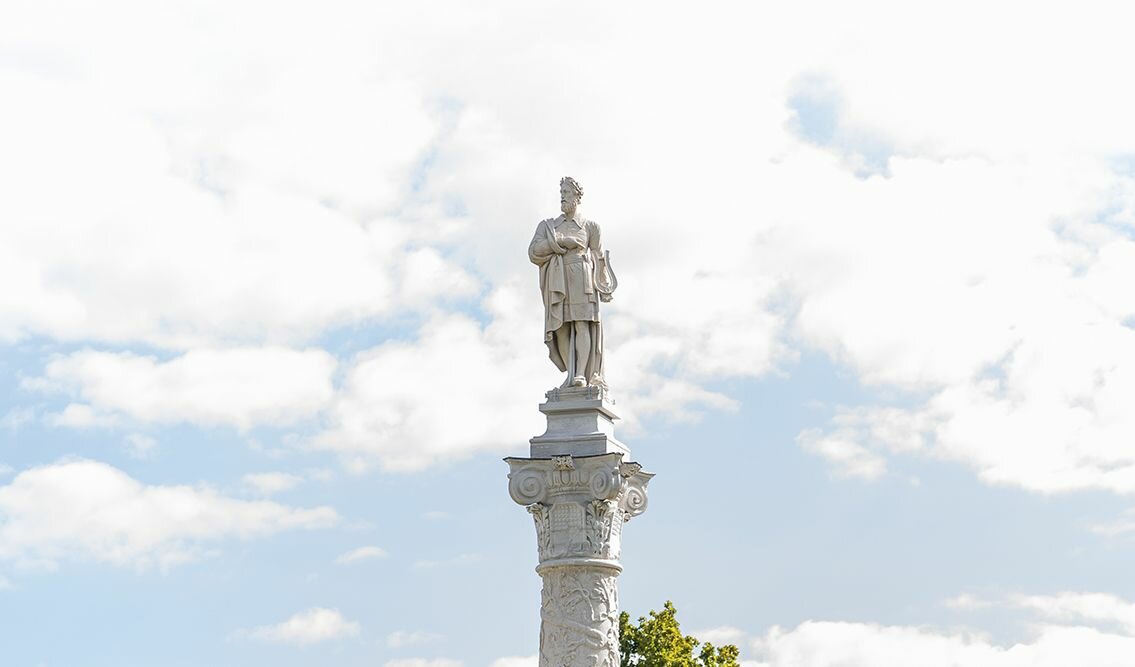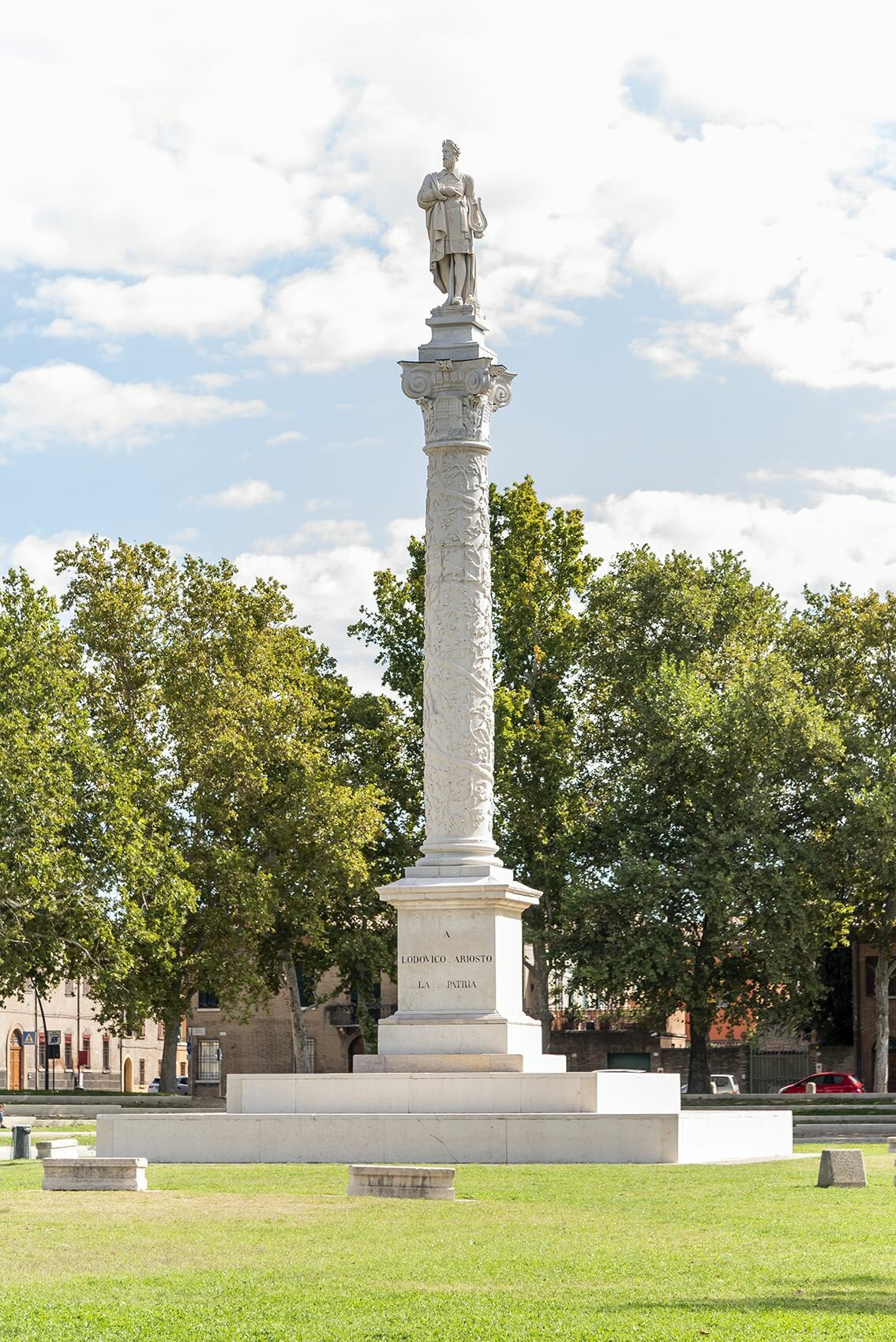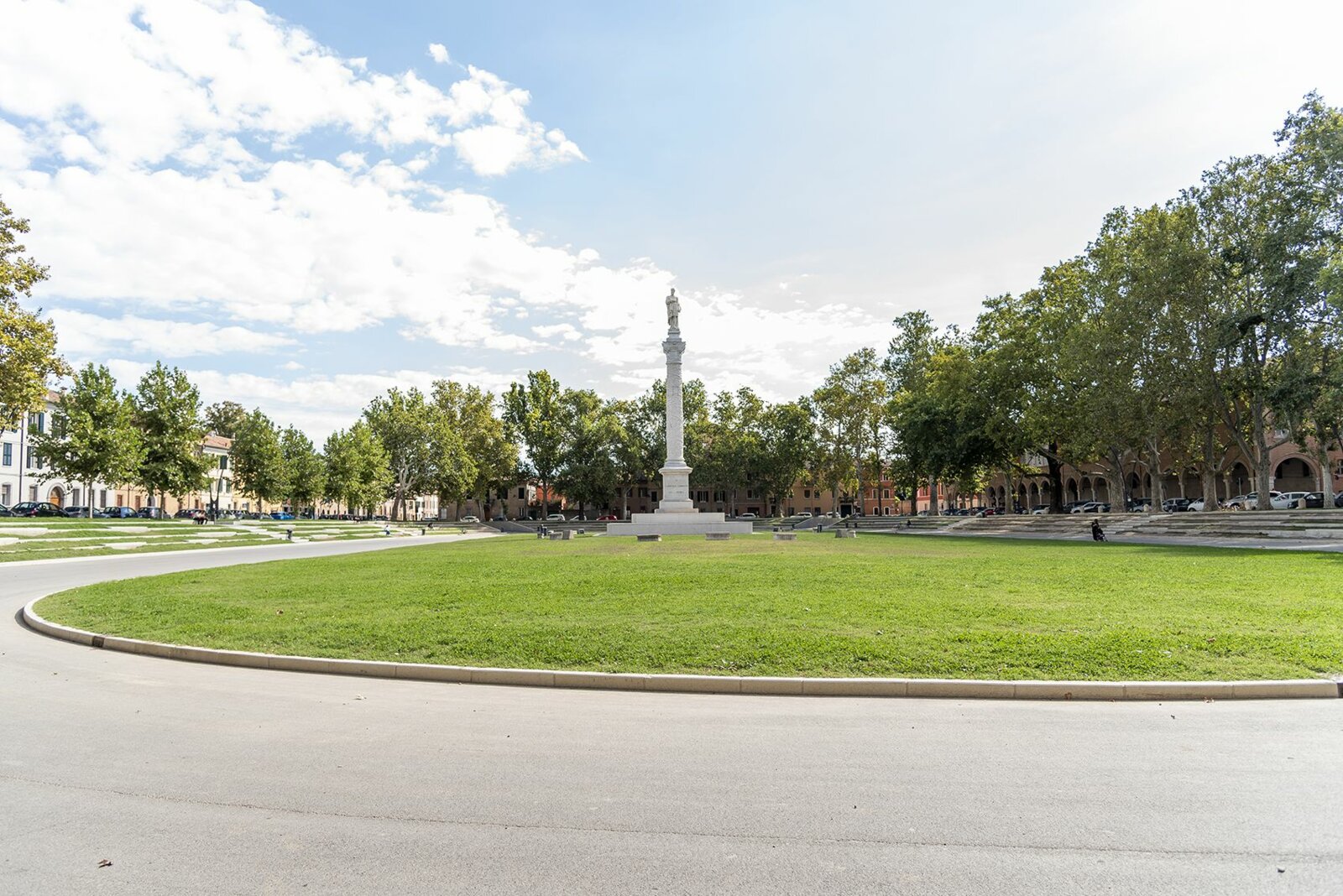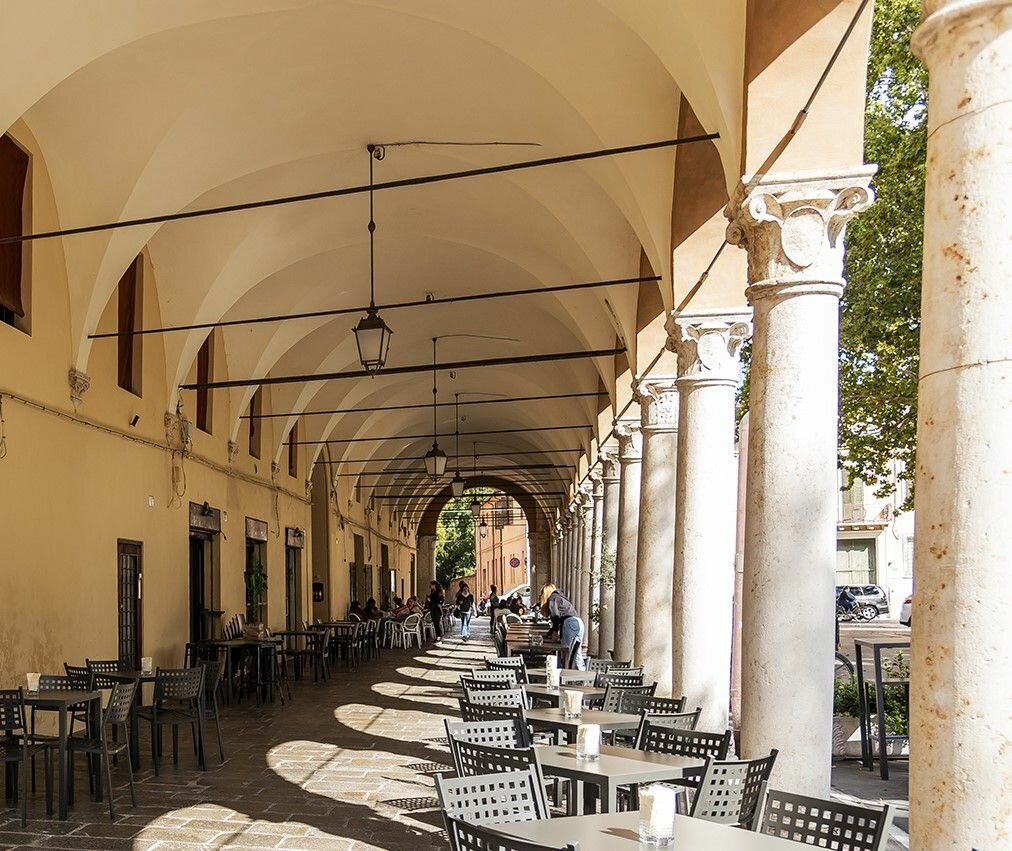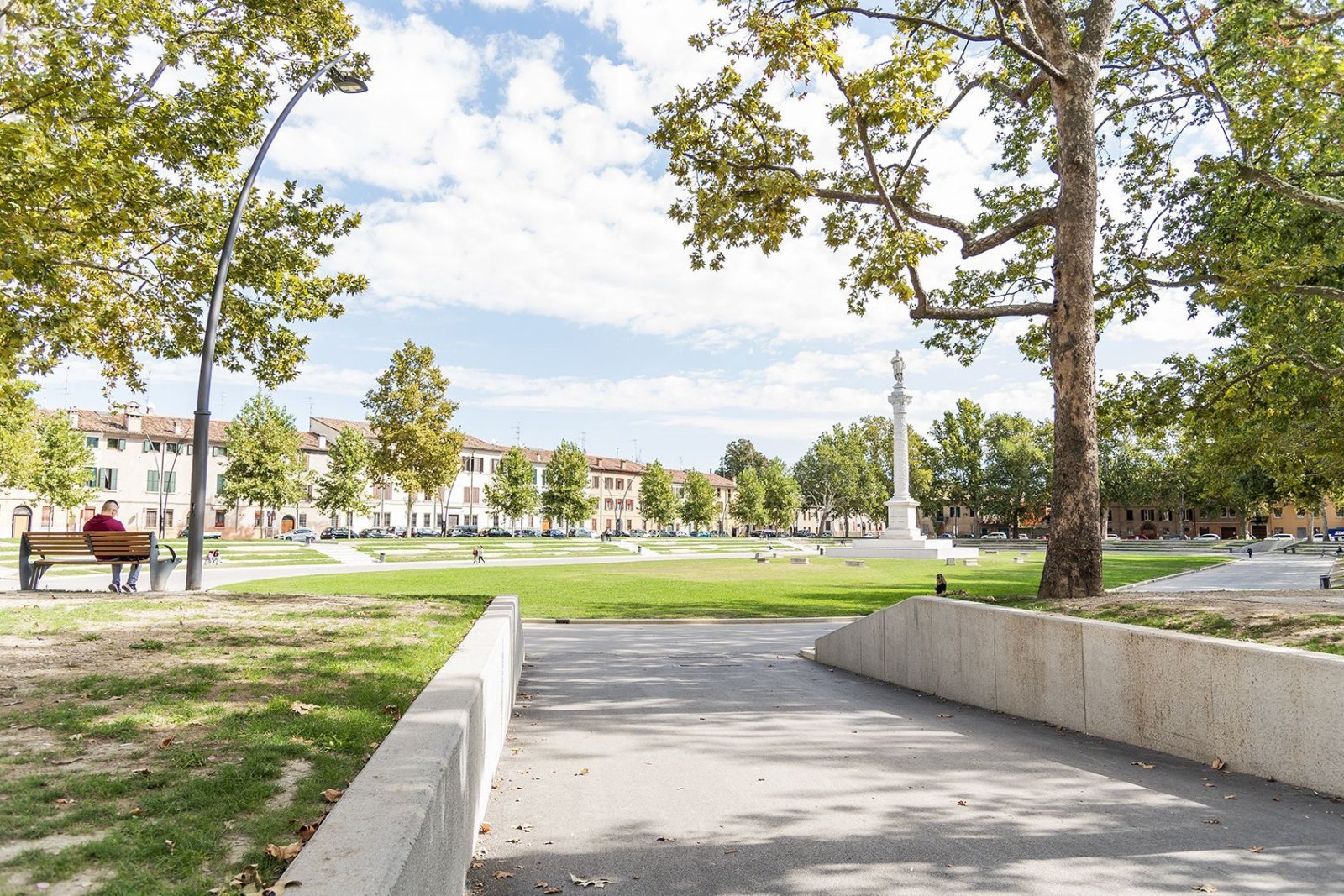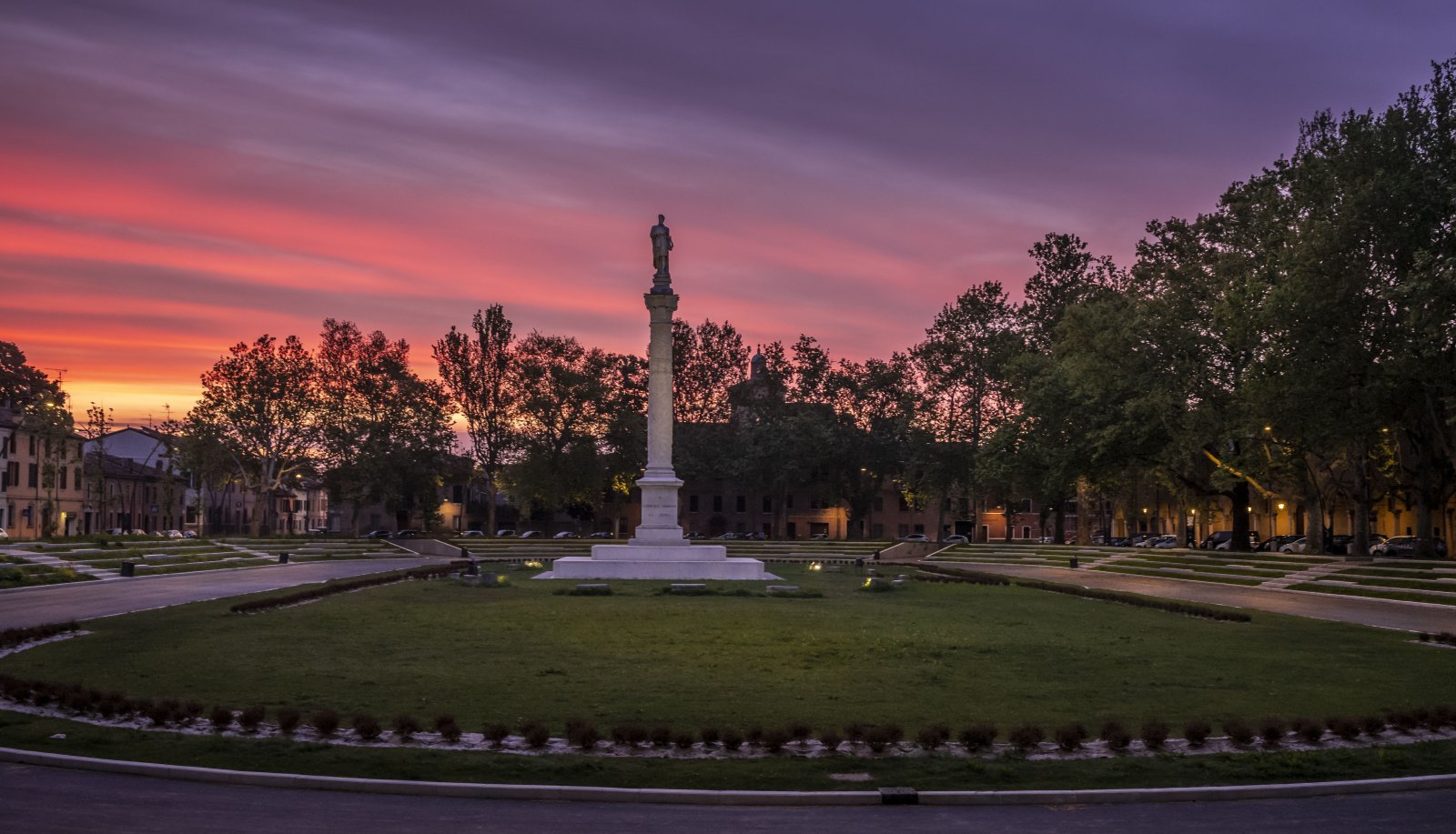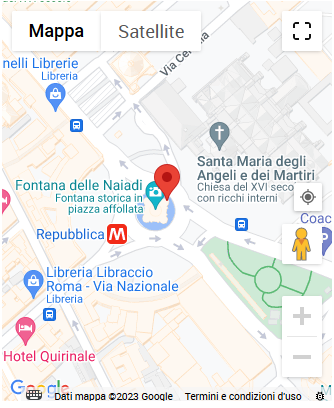Potrebbe interessarti anche

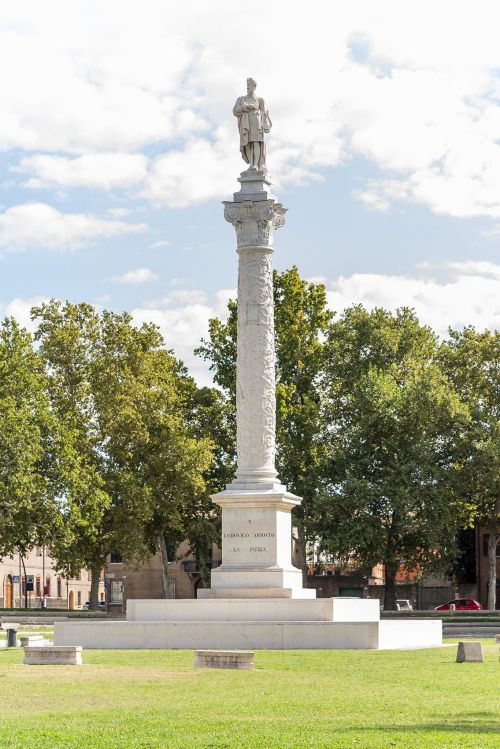
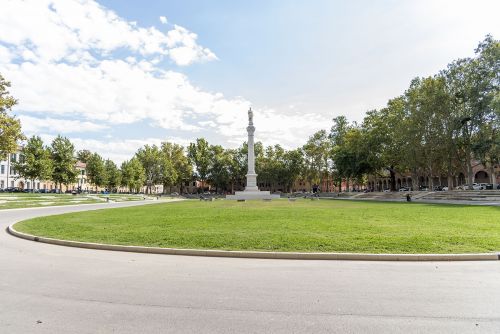
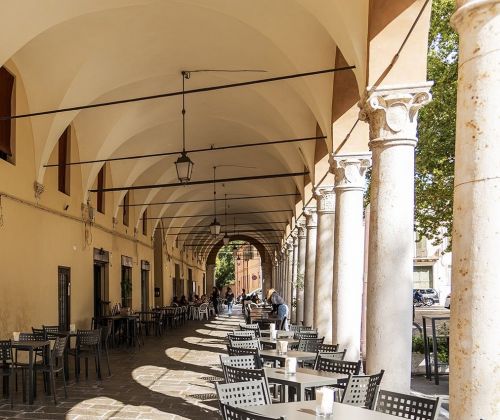
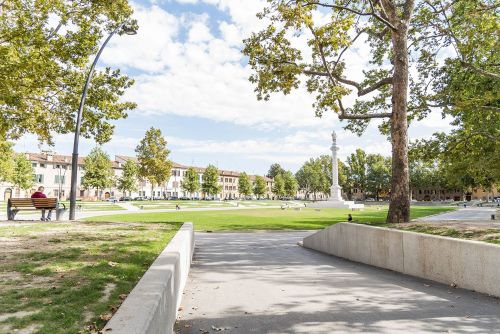
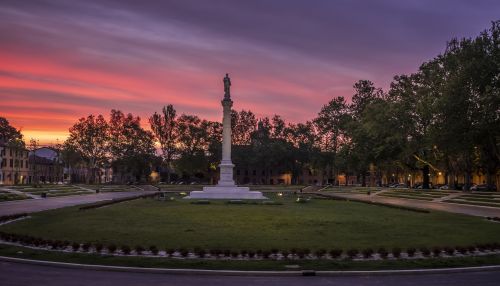

Piazza Ariostea
Walking along the streets of the Addizione Erculea, you will come to a very special and characteristic oval square with a lowered floor: Piazza Ariostea. This square, designed by the famous architect Biagio Rossetti, is now a gathering point for young people and families. An area where you can rest under the shade of a tree while still being inside the city.
Historical Notes
Piazza Ariostea was created precisely to become a gathering point within the expansion of the city. This unmistakable square, originally called Piazza Nuova, is partially framed by two characteristic loggia buildings, the works of Rossetti himself.
After numerous events and dedications, in 1833, Ariosto's statue was finally placed and the square was dedicated to him, officially becoming Piazza Ariostea.
In 1933, the floor of the square was lowered to obtain, all around, a kind of natural staircase, to host the first edition of the Palio di Ferrara, on the occasion of the celebrations of the IV Ariosto Centenary.
Between 2018 and 2020, the square was restored, returning a pleasant and easily usable environment to the city. A fundamental place for Ferrara's social life where you can enjoy an aperitif or simply spend some time in the shadow of Ariosto.
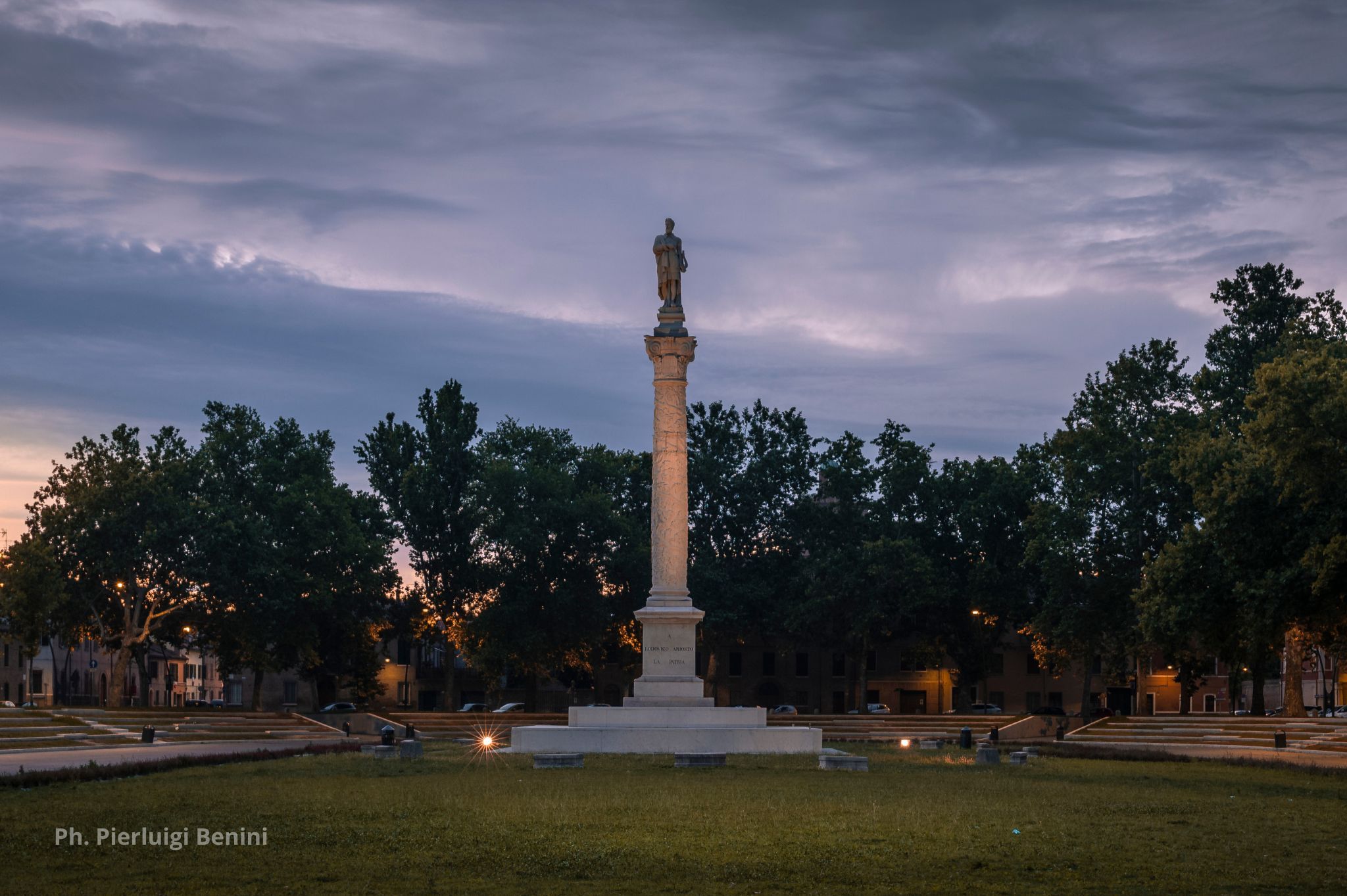
You may not know about...
AN OLD FARMHOUSE. Until 1496, where the square now stands, there was a farmhouse owned by a certain Bartolomeo Zermio. The land was later bought by Ercole I d'Este, who turned it into the Piazza Nova of the Addition of Terranuova, what is now known as the famous Addizione Erculea.
THE STORY OF THE STATUES. The original plan called for the creation of a monument in honour of Hercules I to be placed in the centre of the square. This would be an equestrian statue tasting on two columns with a richly decorated terraced base. The two columns were commissioned to Veronese sculptor Ercole Grandi and shipped to Ferrara by river. Unfortunately, one was lost during unloading. The other was nonetheless skillfully decorated with an oak scroll motif by the brothers Andrea and Michele Bresciani. Once Ercole I died, no one cared anymore about the monument's creation, so much so that the column was only used more than two centuries later, in 1675, as the base for a bronze statue of Alexander VII. In 1796, the French replaced it with a statue of Liberty, which the Austrians later took down in 1799. Later, from 1810 to 1814, the figure of Napoleon took its place at the centre of the square. Finally, in 1833, a statue of the city's illustrious poet was placed on the column and the square took its current name of Piazza Ariostea.

